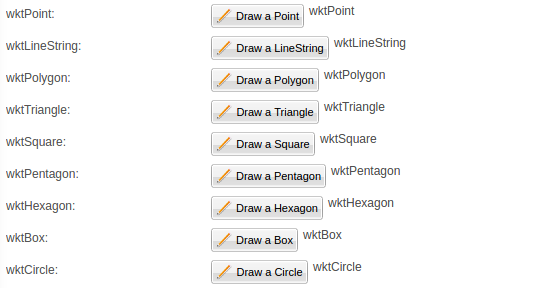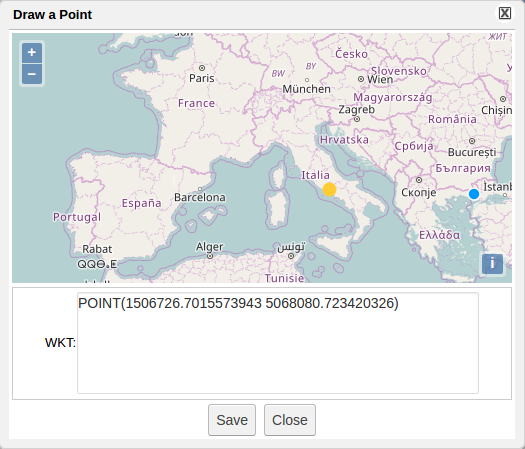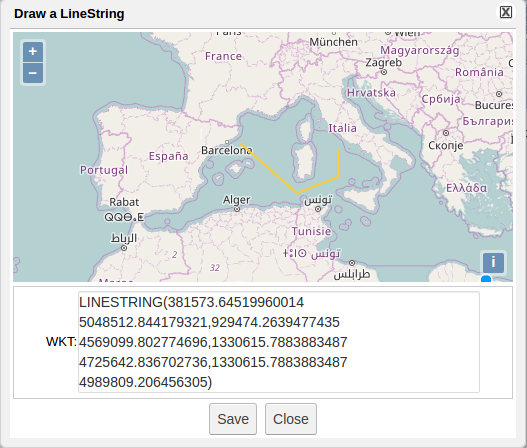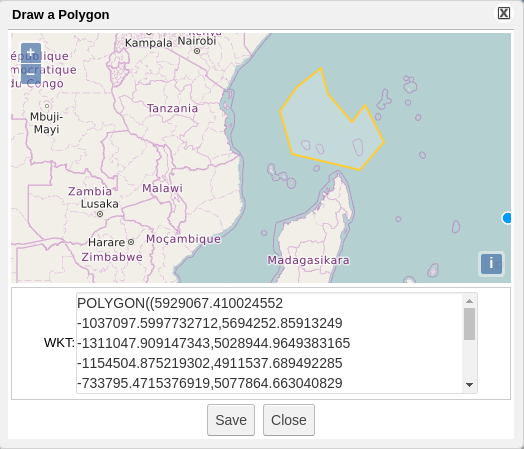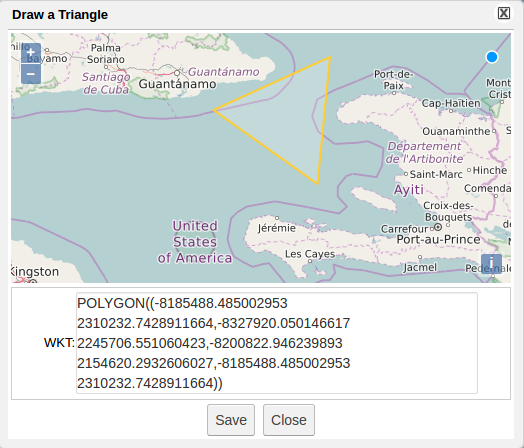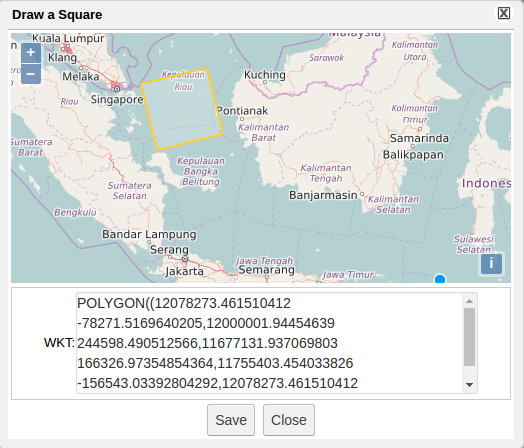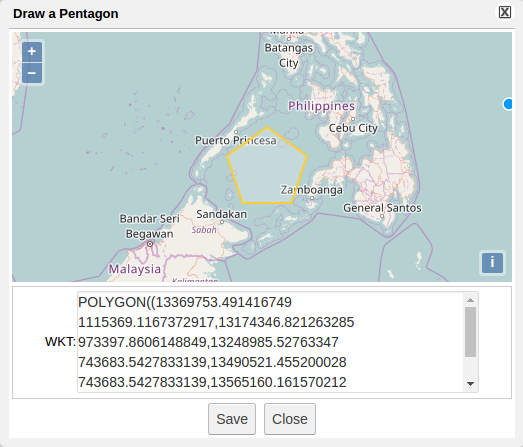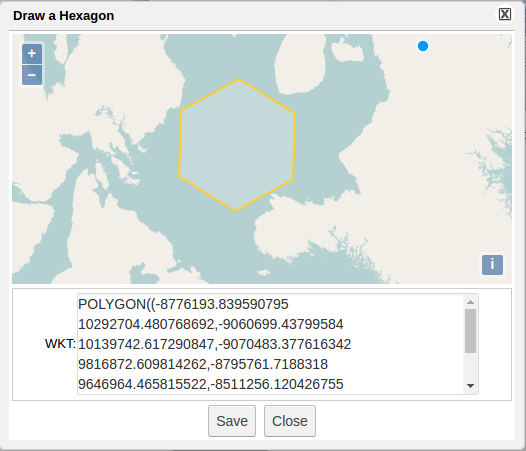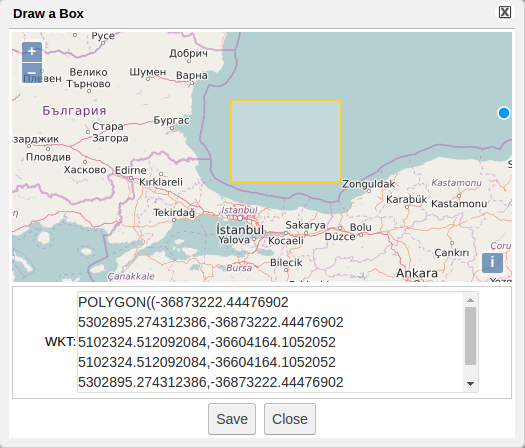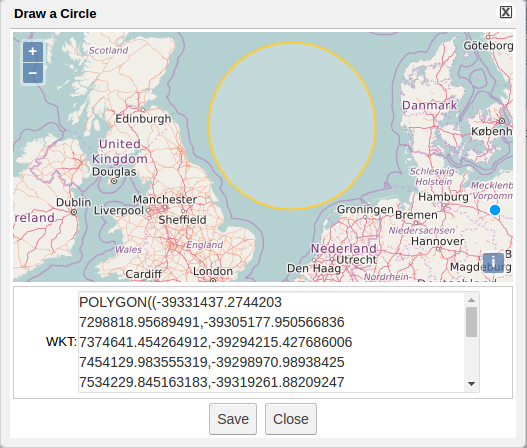Statistical Algorithms Importer: Advanced Input
From Gcube Wiki
Revision as of 14:38, 4 October 2016 by Giancarlo.panichi (Talk | contribs)
- This page explains how to use Advanced Input using Statistical Algorithms Importer(SAI) portlet.
Spatial Data
Spatial Data in SAI
- Spatial Data is supported by Well-known text (WKT) that is a text markup language for representing vector geometry objects on a map, spatial reference systems of spatial objects and transformations between spatial reference systems.[1]
- SAI can support WKT input using the appropriate descriptions.
| Name | Description | Type | Default | I/O |
|---|---|---|---|---|
| wktPoint | wktPoint [WKT_POINT] | String | POINT(-12993071.816027395 7729312.300197024) | Input |
| wktLineString | wktLineString [WKT_LINESTRING] | String | LINESTRING(-16476154.320926309 7161843.802207875,-14617205.79303082 7514065.628545967,-12777825.14437634 6790054.096628778,-12601714.231207293 8081534.126535116,-11271098.442818945 7416226.232340941,-11329802.08054196 6261721.357121639) | Input |
Spatial Data in DataMiner
- DataMiner shows Spatial Data by an specific widget which allows easy selection of the interest's area
Temporal Data
Temporal Data in SAI
Temporal Data in DataMiner
- Temporal Data is supported by specific widget
